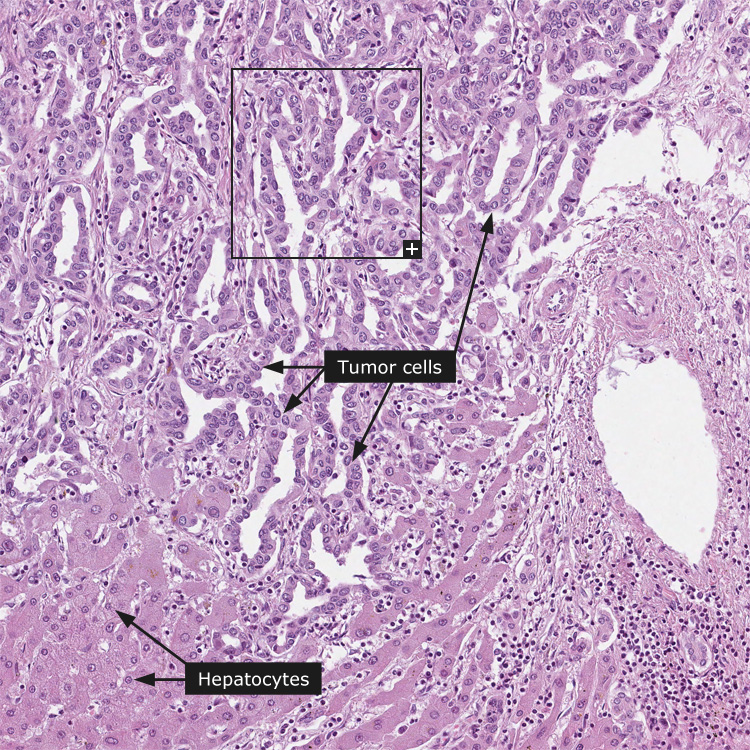Liver cancer
Male, 59 years, moderately differentiated cholagiocellular adenocarcinoma 
Liver cancer
Hepatocellular carcinoma (liver cell cancer) is the most common type of primary liver cancer. It is relatively rare in the United States but very common in Southeast Asia, especially China. The tumor predominantly affects males who are over 50 years of age, although it may arise in younger individuals or even children. The liver is also the primary site for cholangiocarcinomas (intrahepatic bile duct cancers) that are relatively rare and account for 10-20% of all primary liver cancers. These tumors occur in older individuals, usually after the age of 60. The overall median survival for hepatocellular carcinoma is 4 months and the overall 5-year survival rate is 3%. Cholangiocarcinomas have an overall mean survival time of less than 2 years.
Several predisposing factors are thought to play a role in hepatocellular carcinoma. These include infection with hepatotropic viruses such as hepatitis B and C viruses, liver cirrhosis, liver cell dysplasia, exposure to aflatoxins and inborn errors of metabolism such as α-1 antitrypsin deficiency and tyrosinemia. Cholangiocarcinomas have been associated with parasitic infestation of the liver (Clonorchis sinensis), multiple bile duct hamartomas, intrahepatic lithiasis and congenital hepatic fibrosis.
Histologically, hepatocellular carcinomas present a range of appearances. A common feature is the presence of fibrosis and inflammation as hepatocellular carcinoma often develops in the liver of patients with late stages of chronic hepatitis. In well-differentiated tumors, tumor cells resemble normal hepatocytes and may be difficult to determine as malignant. The more poorly differentiated tumors display marked pleomorphism, with tumor giant cells showing little resemblance to normal hepatocytes. Intracellular bile production is sometimes a feature of tumor cells that aids in their classification. A sinusoidal growth pattern and absence of intracellular mucin are characteristic features of hepatocellular carcinomas. Cholangiocarcinomas are adenocarcinomas and display gland formation. Heterogeneity of neoplastic epithelial cells in the same gland is a typical trait. Mucin stains are almost always positive in the tumor cells.
Serum elevation of α-fetoprotein occurs in a large proportion of patients (up to 75%) with hepatocellular carcinoma. Immunohistochemically, hepatocellular carcinomas are immunoreactive for α-fetoprotein, various keratins, α-1 antitrypsin, various integrins, villin and CD15. Cholangiocarcinomas are also immunoreactive for various keratins, including high-molecular weight keratins (that aids in their differentiation from hepatocellular carcinomas), epithelial membrane antigen and carcionoembryonic antigen.
Normal tissue: Liver
|